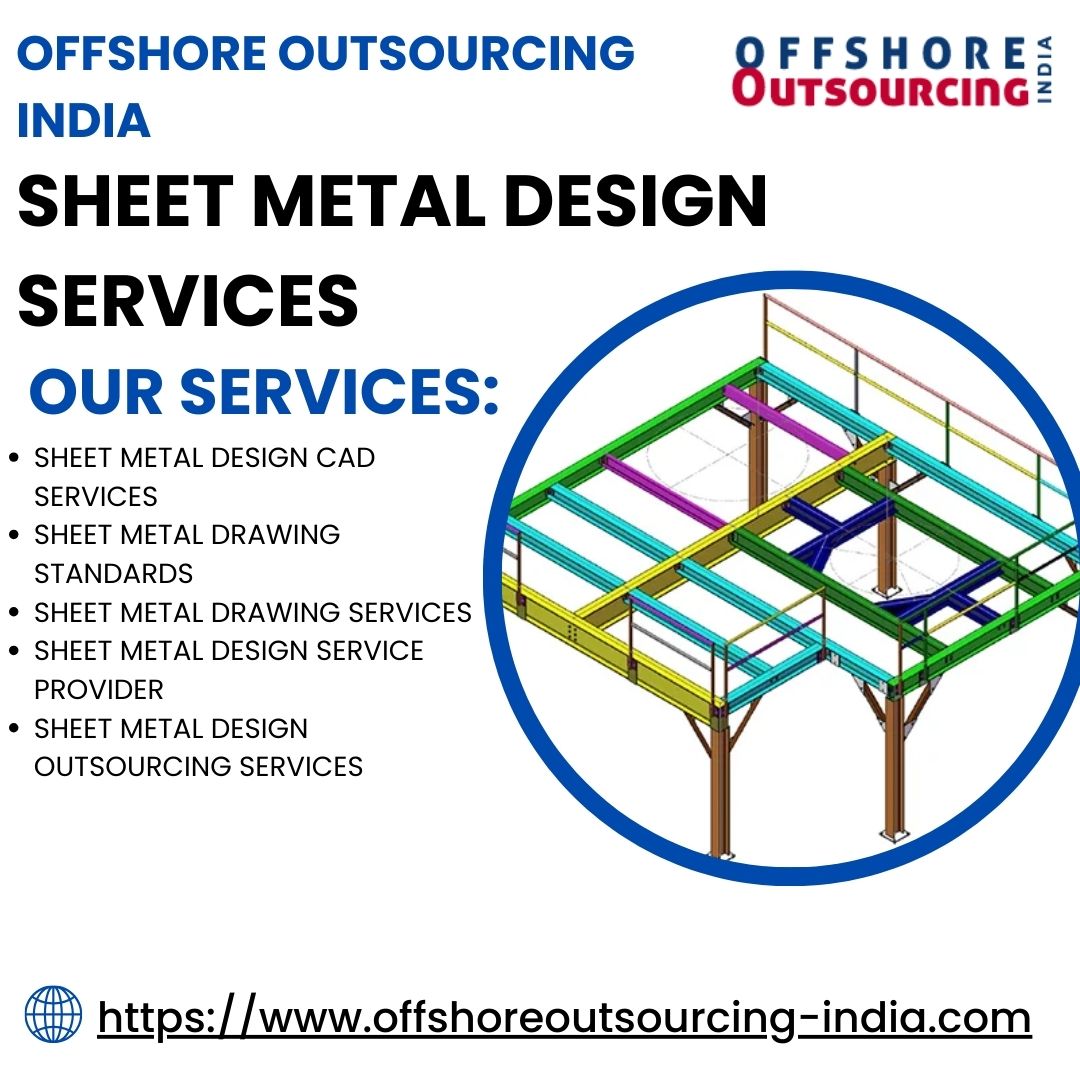


Sheet metal design plays a crucial role in the manufacturing process, offering precise for creating durable products.
In today’s fast-paced manufacturing industry, precision, efficiency, and cost-effectiveness are critical to success. One of the most vital processes that contribute to achieving these goals is sheet metal design. This field has evolved significantly, becoming an integral part of modern manufacturing, providing innovative solutions across a variety of industries. From aerospace to automotive, electronics to construction, sheet metal design plays a fundamental role in creating durable, lightweight, and cost-efficient components that meet the high demands of today’s market.
What is Sheet Metal Design?
Sheet metal design involves the creation of parts and components from thin metal sheets, typically ranging in thickness from 0.2 mm to 6 mm, that are formed, cut, and shaped into desired structures. The process involves several stages, including design, fabrication, and finishing, where the designer must ensure the metal will be functional, cost-effective, and structurally sound for its intended purpose.
The role of sheet metal design is to ensure that the part is not only manufacturable but also optimized for strength, weight, and cost efficiency. Designers employ various techniques, such as bending, cutting, punching, stamping, and welding, to transform flat sheets of metal into intricate and functional parts.
The Importance of Sheet Metal Design in Modern Manufacturing
One of the primary reasons sheet metal design has become so crucial to modern manufacturing is its ability to produce high-quality, durable components at a relatively low cost. Sheet metal can be fabricated using a variety of methods that are efficient and scalable, allowing manufacturers to produce large quantities of parts with minimal waste. Additionally, the use of advanced Computer-Aided Design (CAD) tools enables designers to simulate the entire production process, identify potential design flaws early, and optimize the design for cost savings.
Sheet metal design offers remarkable versatility in terms of the types of products it can be applied to. Whether it’s a small component for an electronic device or a large structural element for a building, sheet metal can be shaped and molded to meet a wide range of specifications. The ability to produce parts with complex geometries while maintaining precision and structural integrity makes sheet metal design an ideal choice for industries where performance is paramount.
Each industry has its own set of requirements when it comes to sheet metal components, and custom design plays a significant role in meeting these needs. For example, in the automotive industry, sheet metal parts need to be lightweight yet strong to enhance fuel efficiency and safety. In the aerospace industry, materials must be resistant to extreme conditions while maintaining structural integrity. Sheet metal design services allow for customization, ensuring that parts are perfectly suited to the unique demands of the industry they are being created for.
In today’s environmentally conscious world, sustainability is a key consideration for manufacturers. Sheet metal design supports sustainable practices by reducing material waste through advanced cutting techniques such as laser cutting and water jet cutting. Additionally, the ability to recycle metals such as aluminum and steel further contributes to eco-friendly manufacturing processes. Manufacturers are increasingly adopting these techniques to meet regulatory standards and reduce their environmental impact.
The integration of advanced technologies into sheet metal design has significantly improved manufacturing capabilities. The use of CNC (Computer Numerical Control) machines, 3D printing, and automated systems has enabled manufacturers to achieve greater precision and faster production times. CAD software allows designers to create 3D models, simulate performance, and optimize designs before physical production, reducing the risk of errors and costly revisions.
Challenges in Sheet Metal Design
While sheet metal design offers many advantages, it is not without its challenges. One of the main hurdles is ensuring the correct material selection, as different metals exhibit varying properties, such as strength, malleability, and resistance to corrosion. Additionally, the design must account for the limitations of the manufacturing process, such as the maximum bend radius or the size of the metal sheets, to avoid complications during production.
Conclusion
Sheet metal design is undeniably vital to modern manufacturing, playing a central role in industries ranging from aerospace to automotive, medical devices to construction. By leveraging advanced design techniques, material science, and manufacturing technologies, sheet metal design allows companies to produce high-quality, efficient, and cost-effective components that meet the demands of today’s global market.
